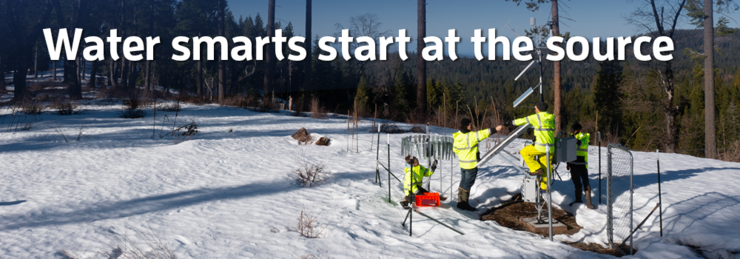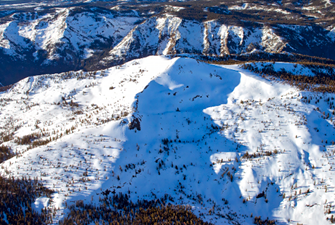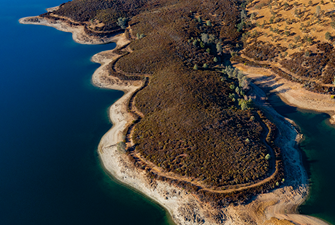
Managing a natural resource as precious as water for 1.4 million customers in an era of climate change is more complex and critical than ever. At EBMUD, we’re adapting to meet this challenge – today and into the future.
Water supply management starts with our hydrographers who monitor snow, rainfall, and environmental conditions in the East Bay and across the 575-square miles of mountains and foothills tumbling from the Sierra Nevada that feed the Mokelumne River, the source of 90 percent of our drinking water.

Your water supply begins as snow and rain that feed the Mokelumne River.
EBMUD engineers use these observations and long-term hydrologic statistics to project the amount of water we expect to collect in our reservoirs. They develop operations plans that must balance our drinking water needs with our flood control and environmental stewardship responsibilities, as well as the water rights of other stakeholders on the Mokelumne.
But our 90 years of historical data could become less predictive as new weather patterns emerge. Last year we captured far less runoff than forecasted as drought-parched soil and thirsty plants absorbed water we expected would end up in our reservoirs. A warmer atmosphere means more evaporation and a shrinking snowpack. And climate change could be contributing to more extreme rain and snowfall patterns. This winter, record high precipitation in October and December alternated with record dry conditions in November and January.
“We are in uncharted waters, and every last drop is going to matter,” says Supervising Hydrographer Jeff Toone. “The better we can refine our techniques, the better we can use this water judiciously."
EBMUD is collecting new soil moisture measurements, employing remote-sensing technologies, adjusting statistical models, and working with government agencies to track atmospheric rivers. This helps us improve our water supply forecasts and informs our investments in supplemental supplies and conservation efforts.
“We’ve built resilience into our system,” says Senior Civil Engineer Chris Potter, “and we’ll continue to follow the science as we adapt to an uncertain future.”

Nothing but the best
In 2020 and 2021, your drinking water was consistently the highest quality, surpassing every state and federal public health requirement. Read the annual water quality report at ebmud.com/waterquality.
Pardee Reservoir’s low water level marks another dry year.